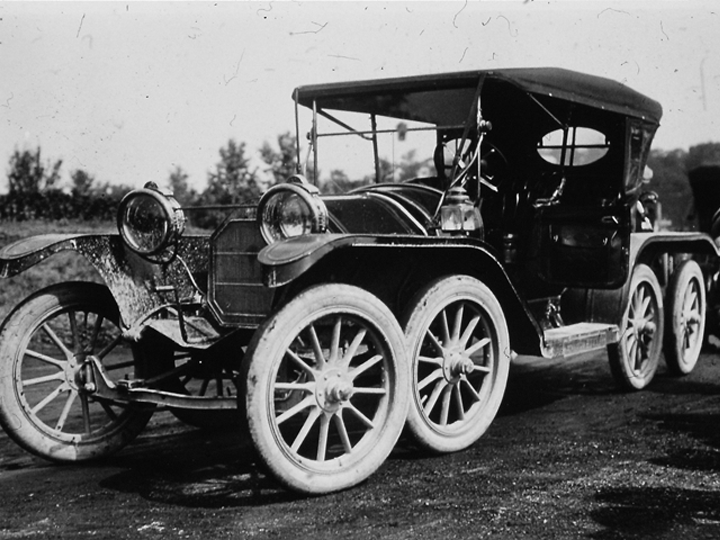
Having looked at six wheel cars in the past, I thought that we would bring you a very early vision into the benefits of multi wheel motoring.
01-Mar-23 historicracing.com
Milton Reeves built his first motorised vehicle in 1896, designed primarily to demonstrate his patented VST variable speed transmission which operated with the use of different sized pulleys. Though intended mainly for industrial use, his first test of the transmission in an auto took place on 26 September 1896, before the bodywork was complete. It worked well, but it was noisy and there were a number of complaints from people in the neighborhood. Thus a double muffler was added, which was probably the first ever automobile silencer.

Reeves Motocycle
The car, called the Motocycle, attracted a degree of interest and a polished ebony body was added to improve it's appearance. Reeves was not just imaginative and innovative, he was also quite commercial and saw the potential in the automobile industry. He designed an air cooled engine which was coupled to the VST gearbox and a double chain drive to the rear axle.
With engine sales booming, Reeves stopped the limited production of cars to concentrate on supplying companies like Aerocar, who were ordering 500 units at a time. Unfortunately when they went bust, Reeves was stuck with a oversupply of motors. He therefore decided to go back into building cars.

1906 Reeves Model 6
Only a few cars were sold and, with the booming sales of his VST industrial pulley systems, he once again stopped car production. This was not quite the end of Reeves involvement with automobiles and in 1911 he introduced the Reeves Octauto. The literature claimed that in the Reeves Octauto, the weight of the car was distributed over eight wheels, instead of being concentrated on four. Stating that with four wheels, the wheel at each corner has to carry a quarter of the load. His case was that if a wheel dropped into a rut then it was possible that the other wheels would have to carry additional load and thus potentially damage a tyre.

the Octauto
It was displayed at the 1911 Indianapolis 500, where he claimed that the "eight-wheeled idea is applicable to any kind of vehicle." Unfortunately for Reeves there was little or no interest in a vehicle that featured a 180 inch wheelbase and had an overall length of 248 inches! It also cost the small matter of $3200.00 (about $81,500.00 today).

the Sextoauto
Undaunted, he introduced the Sextoauto the following year, concluding that he could achieve similar results with six wheels. Two prototypes were built, one from the original Octauto and a second from a modified Stutz chassis. Once again having failed to generate any sales (the price tag of the six wheeler was an astronomical $4500.00, about $105,000.00 today), Reeves quietly returned to his more profitable industrial endeavors.
Milton died in 1925 at the age of 60, he held more than 100 patents.